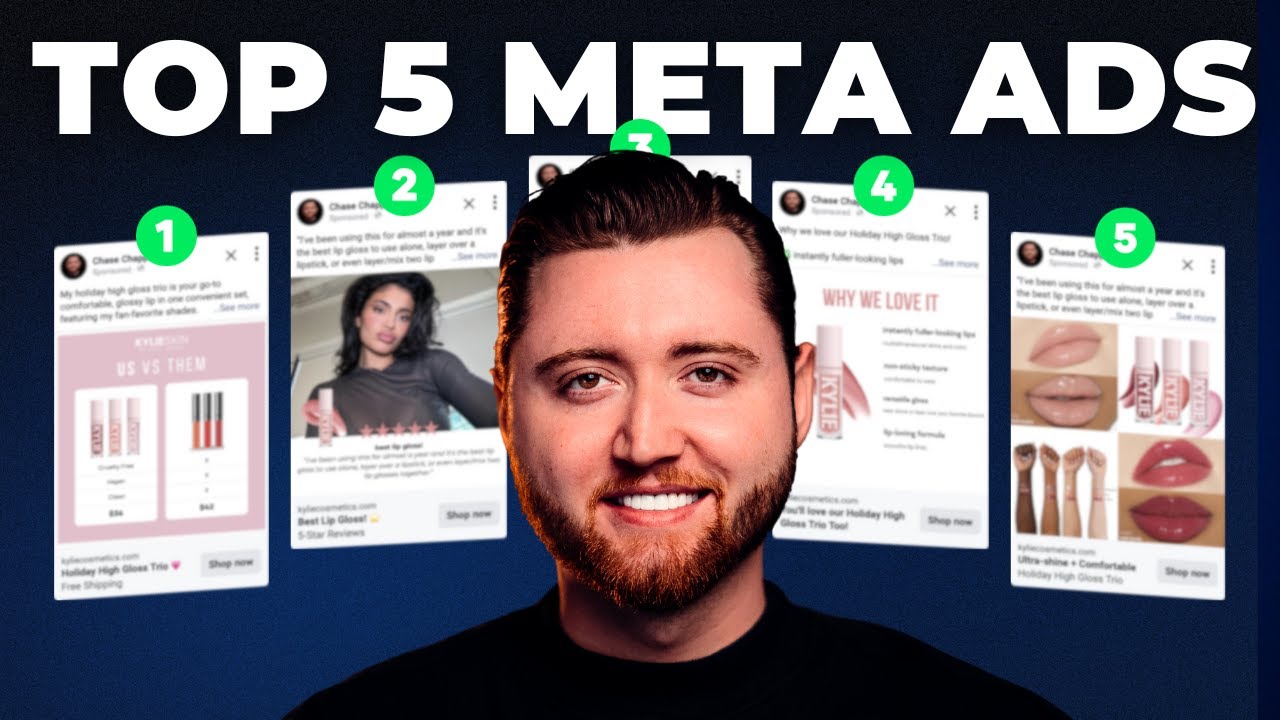$1million per month creative ad strategy
Summary
TLDRIn this discussion on Facebook advertising, the speaker emphasizes the importance of treating ads as a 'sequence of yeses' rather than a single objective. They outline the psychological journey a consumer takes, highlighting the need for effective hooks, generating desire, and clear calls to action. By dissecting each stage—from capturing attention to facilitating the click-through—the speaker argues that understanding these elements can significantly improve ad performance. The goal is to engage the audience deeply, ensuring each ad leads them closer to making a purchase, ultimately boosting conversion rates.
Takeaways
- 😀 Most Facebook ads fail due to a narrow view of advertising objectives.
- 😀 Successful ads require a sequence of 'yeses' from the audience to achieve sales.
- 😀 It's essential to treat ads as a journey rather than a one-off interaction.
- 😀 The first step in the ad process is creating a compelling hook that captures attention.
- 😀 Each psychological checkpoint in the ad must elicit a subconscious 'yes' from the viewer.
- 😀 Measuring the effectiveness of ads should focus on the audience's emotional response.
- 😀 The sequence of attention, interest, desire, and action is crucial for effective advertising.
- 😀 A high click-through rate does not guarantee conversions; desire must be adequately built.
- 😀 Review and analyze ads from the perspective of the target audience to improve effectiveness.
- 😀 Generating multiple hook ideas is key; don’t aim for perfection on the first try.
Q & A
What is the primary reason most Facebook ads fail?
-Most Facebook ads fail because advertisers have a broad view of what an ad should accomplish, often focusing on a single objective rather than recognizing the nuanced sequence of decisions a consumer must make.
What does the term 'sequence of yeses' refer to?
-The 'sequence of yeses' refers to the series of subconscious affirmations that a potential customer must go through, from being a stranger to making a purchase, requiring them to say 'yes' at each stage of engagement.
What is the first step in creating an effective Facebook ad?
-The first step is creating a compelling hook that captures the audience's attention and makes them stop scrolling.
How should advertisers think about the creative process for ads?
-Advertisers should compartmentalize their creative focus to address each stage of the consumer's journey, ensuring that every element is designed to elicit a positive response from the audience.
What role does consumer psychology play in advertising?
-Understanding consumer psychology is crucial for creating effective ads, as it helps advertisers anticipate how potential customers will react emotionally and behaviorally at each step.
Why is measuring desire in an ad challenging?
-Measuring desire is difficult because it is an emotional response that is harder to quantify than metrics like clicks or views, yet it is vital for encouraging users to take the next step.
What is the importance of a clear call to action?
-A clear call to action is essential because it guides the audience on what to do next, ensuring they understand how to proceed for more information or to make a purchase.
How can advertisers improve their hook for ads?
-Advertisers can improve their hooks by brainstorming a wide range of ideas and refining them to find the most compelling and engaging elements that will stand alone across various formats.
What is the significance of tracking metrics in advertising?
-Tracking metrics allows advertisers to assess which elements of their ads are successful or failing, helping them to make data-driven adjustments for improved conversion rates.
What advice is given for generating ideas for hooks?
-The advice is to start by generating a large number of hook ideas, including some that may seem silly or unrefined, as this process often leads to discovering a gem worth developing further.
Outlines

This section is available to paid users only. Please upgrade to access this part.
Upgrade NowMindmap

This section is available to paid users only. Please upgrade to access this part.
Upgrade NowKeywords

This section is available to paid users only. Please upgrade to access this part.
Upgrade NowHighlights

This section is available to paid users only. Please upgrade to access this part.
Upgrade NowTranscripts

This section is available to paid users only. Please upgrade to access this part.
Upgrade NowBrowse More Related Video
5.0 / 5 (0 votes)





